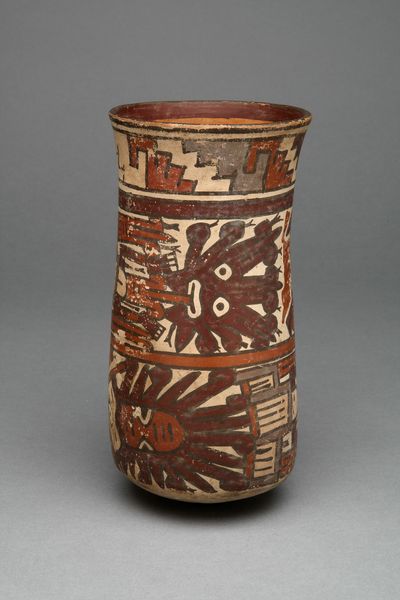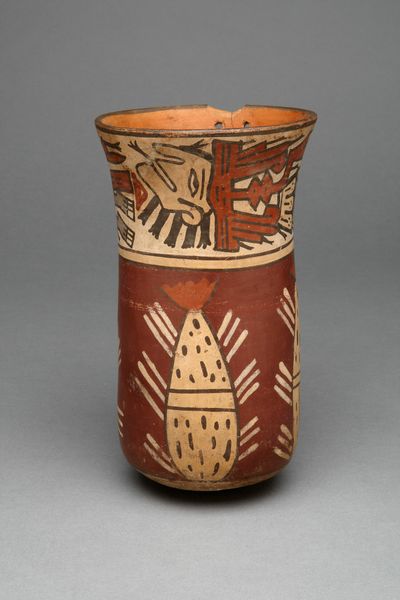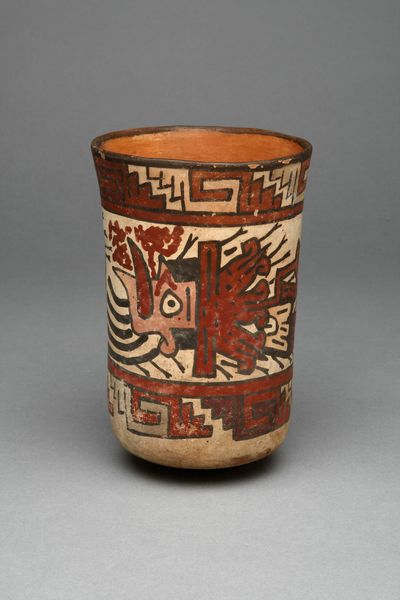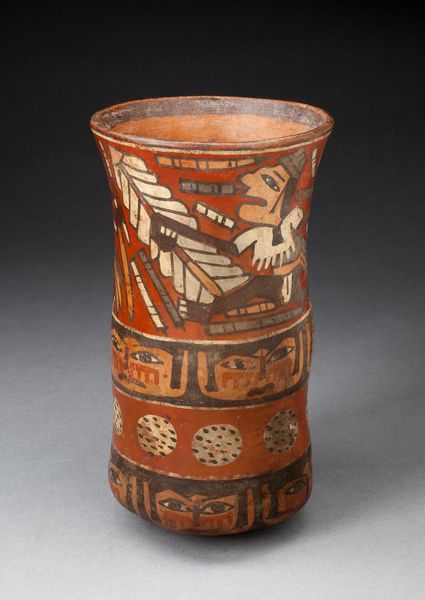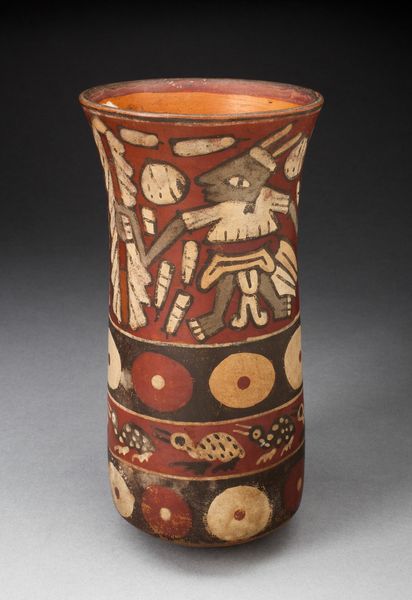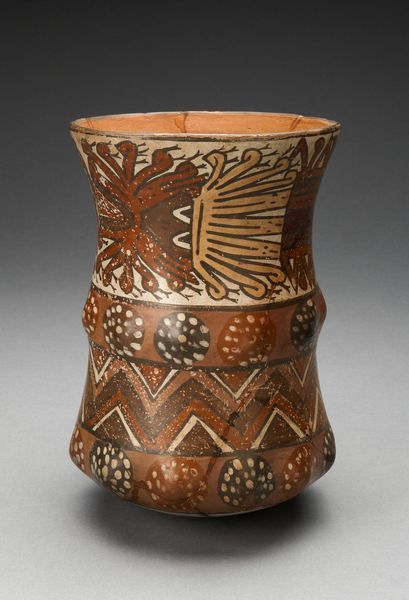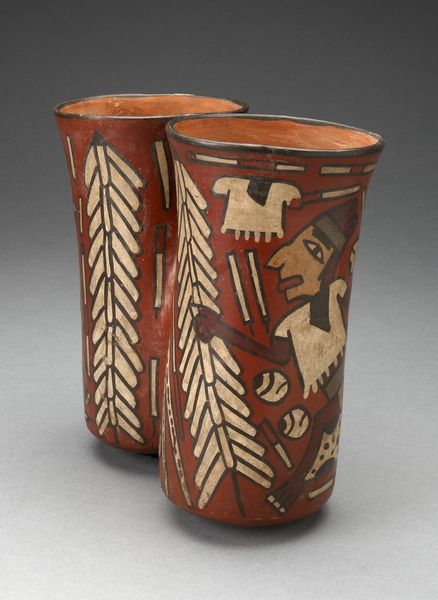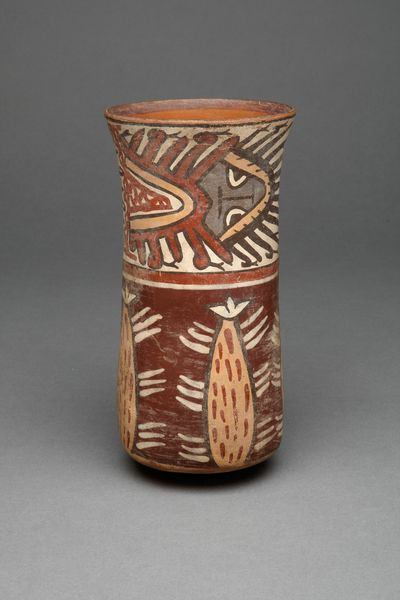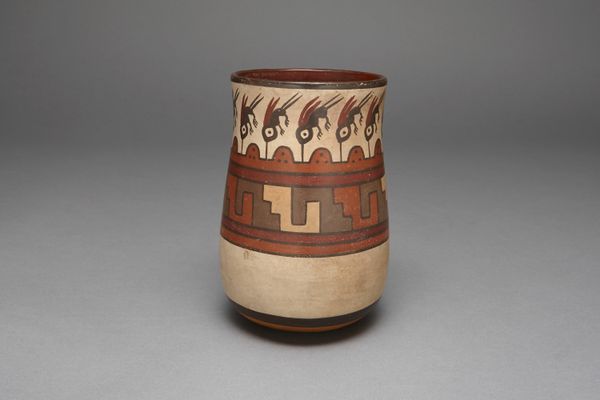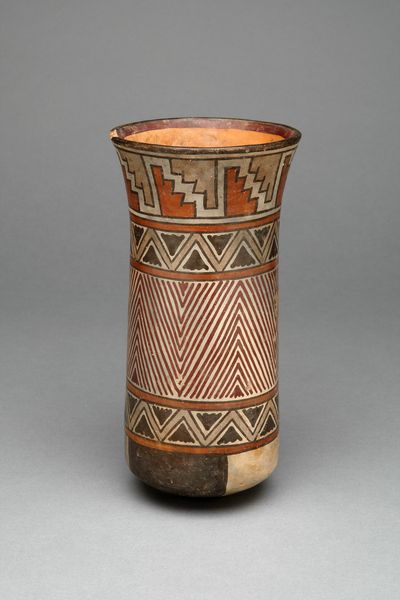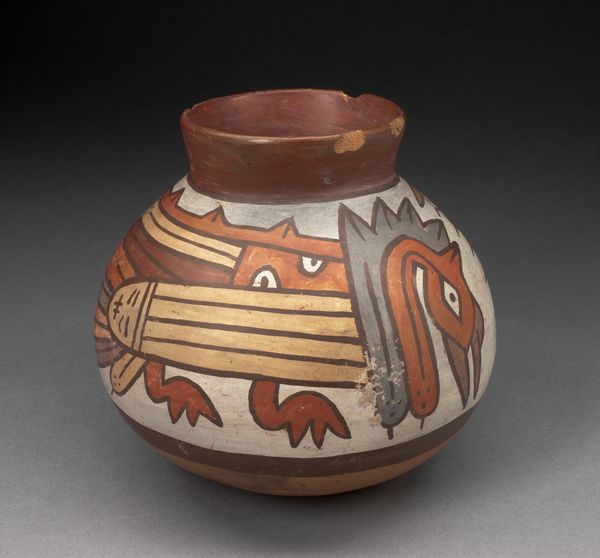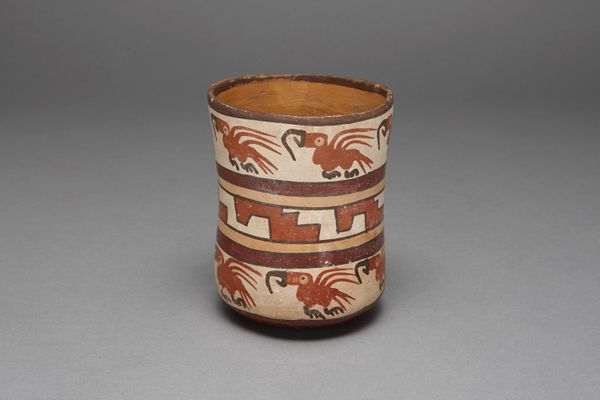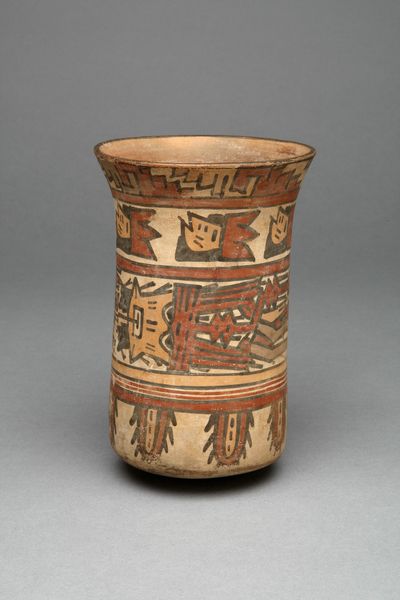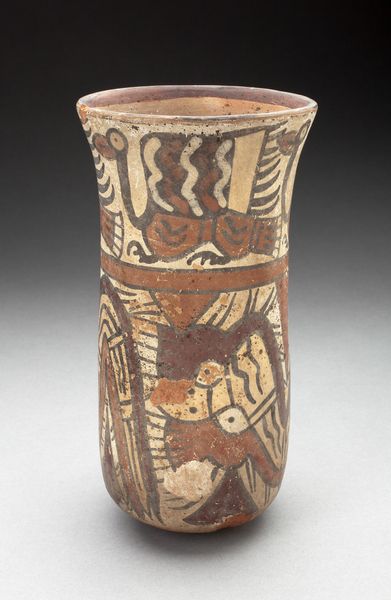
Beaker Depicting Abstract Figure and Geometric Motifs c. 180 - 500
0:00
0:00
ceramic, earthenware
#
ceramic
#
earthenware
#
geometric
#
ceramic
#
indigenous-americas
Dimensions: 22 × 10.5 cm (8 5/8 × 4 1/8 in.)
Copyright: Public Domain
Curator: Here we have a beaker, believed to have been crafted between 180 and 500 AD by the Nazca people. It is currently part of the collection here at the Art Institute of Chicago. Editor: It's remarkably well-preserved. The terra cotta seems rather coarsely processed, giving a chalky impression. The abstract designs pop with such bold reds and browns against the buff clay—there's an almost jarring quality. Curator: Indeed. Note how the artist has organized these images around the body of the beaker into three distinct horizontal registers. Consider the formal interplay between those crisp geometric borders that top and bottom, contrasting with that dynamic, almost frenetic imagery in the central frieze. The motifs feel both contained and explosively energetic. Editor: The making process clearly informed the aesthetic here, which strikes me as quite purposeful, no? It speaks to me of an early production system reliant on local, rudimentary methods, allowing both repetition of forms while retaining those idiosyncrasies we see in the applied paint. What do you think of the production practices of pottery as it was integrated with society at the time? Curator: What I appreciate is the relationship between form and content. The painted decorations, in their geometric and abstracted forms, don't necessarily seek to faithfully replicate nature. They strive for a symbolic representation that reveals cultural understandings. Observe how motifs seem to be repeated across different wares during the period, potentially creating its own set of coded language within this Nazca society. Editor: It makes me consider the function and material reality again. Its creation as a functional item within a stratified, arguably ritualistic society raises interesting questions: who made it, who used it, and what economic forces would've allowed the necessary investment of time, labor and skill into its making? It may not just be utilitarian, as something like the precise nature of the form suggests special handling or storage capabilities. Curator: That balance between functionality and decoration—the material and the abstract. It encapsulates the core tensions we often find in analyzing ancient art. Editor: Agreed, by observing the materials, we can hypothesize its process while observing it as a product of the Nazca aesthetic creates an appreciation that is really timeless.
Comments
No comments
Be the first to comment and join the conversation on the ultimate creative platform.
